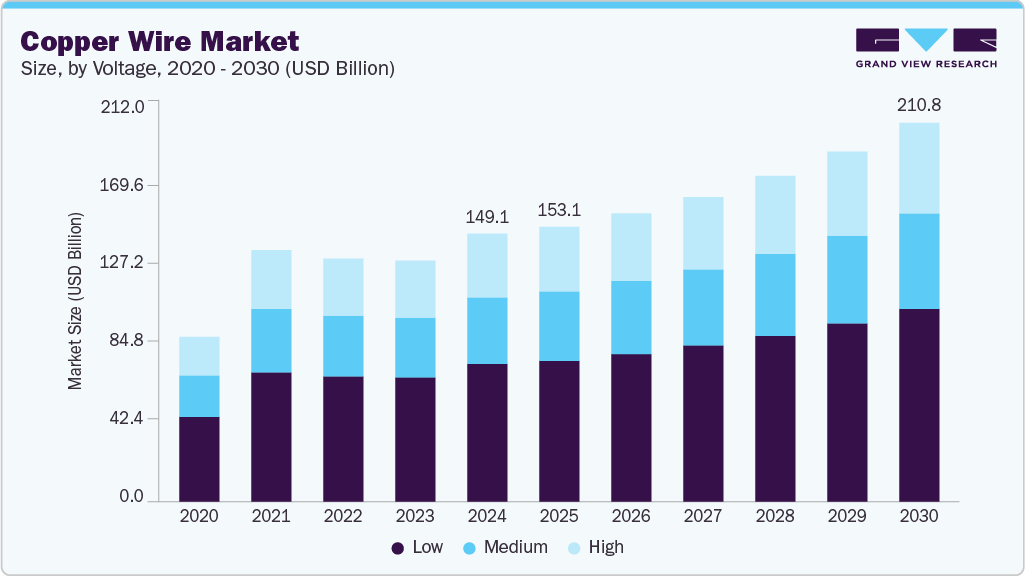The global copper wire market, valued at USD 149.12 billion in 2024, is expected to reach USD 210.79 billion by 2030, expanding at a compound annual growth rate (CAGR) of 6.6% from 2025 to 2030. This rapid growth is largely attributed to the worldwide shift towards renewable energy.
Key Market Trends and Insights
In 2024, the Asia Pacific region dominated the global copper wire market, accounting for 74.3% of the total revenue. In terms of voltage, the low voltage segment held the majority market share, exceeding 51.0% in 2024. The building wire segment, by application, held a revenue share of 37.3% in the same year. However, the renewable energy segment is expected to register the fastest CAGR over the forecast period.
Market Size and Forecast
The market size in 2024 was USD 149.12 billion, and it is projected to reach USD 210.79 billion by 2030, growing at a CAGR of 6.6% from 2025 to 2030. The Asia Pacific region was the largest market in 2024.
The demand for copper wiring in solar panels and wind turbines is increasing as countries invest more in clean energy to reduce carbon emissions and decrease reliance on fossil fuels.
Copper wire plays a crucial role in the electrical and electronics industry, contributing to its robust market growth. As a vital component of electrical conductivity, copper wires are extensively used in power transmission, distribution systems, circuit wiring, and various electronic devices. The rising demand for consumer electronics, including smartphones, tablets, and home appliances, is driving the consumption of copper wires. Additionally, the growth of global data centers and increasing digitalization further boost demand, as copper wires are critical components in network infrastructure and high-performance servers.
Emerging economies such as India, China, and Southeast Asia, characterized by rapid urbanization and infrastructure development, are major contributors to the expansion of the copper wire market. These regions are witnessing significant investments in smart cities, transportation networks, commercial buildings, and industrial parks. Government-led initiatives focusing on rural electrification and grid expansion projects stimulate demand for copper conductors. Furthermore, copper’s reliability, longevity, and superior conductivity make it the preferred material in overhead and underground power cables used in large-scale infrastructure projects.
The shift towards renewable energy sources is another significant growth catalyst. Solar power systems, wind turbines, and energy storage units require extensive copper wiring for efficient power generation and transmission. With global climate goals pushing for renewable integration, copper wire is increasingly critical in connecting energy production units to the main grid and ensuring minimal energy losses. As smart grid technologies and energy-efficient solutions gain traction, advanced copper wiring systems are required for grid modernization and load management.

